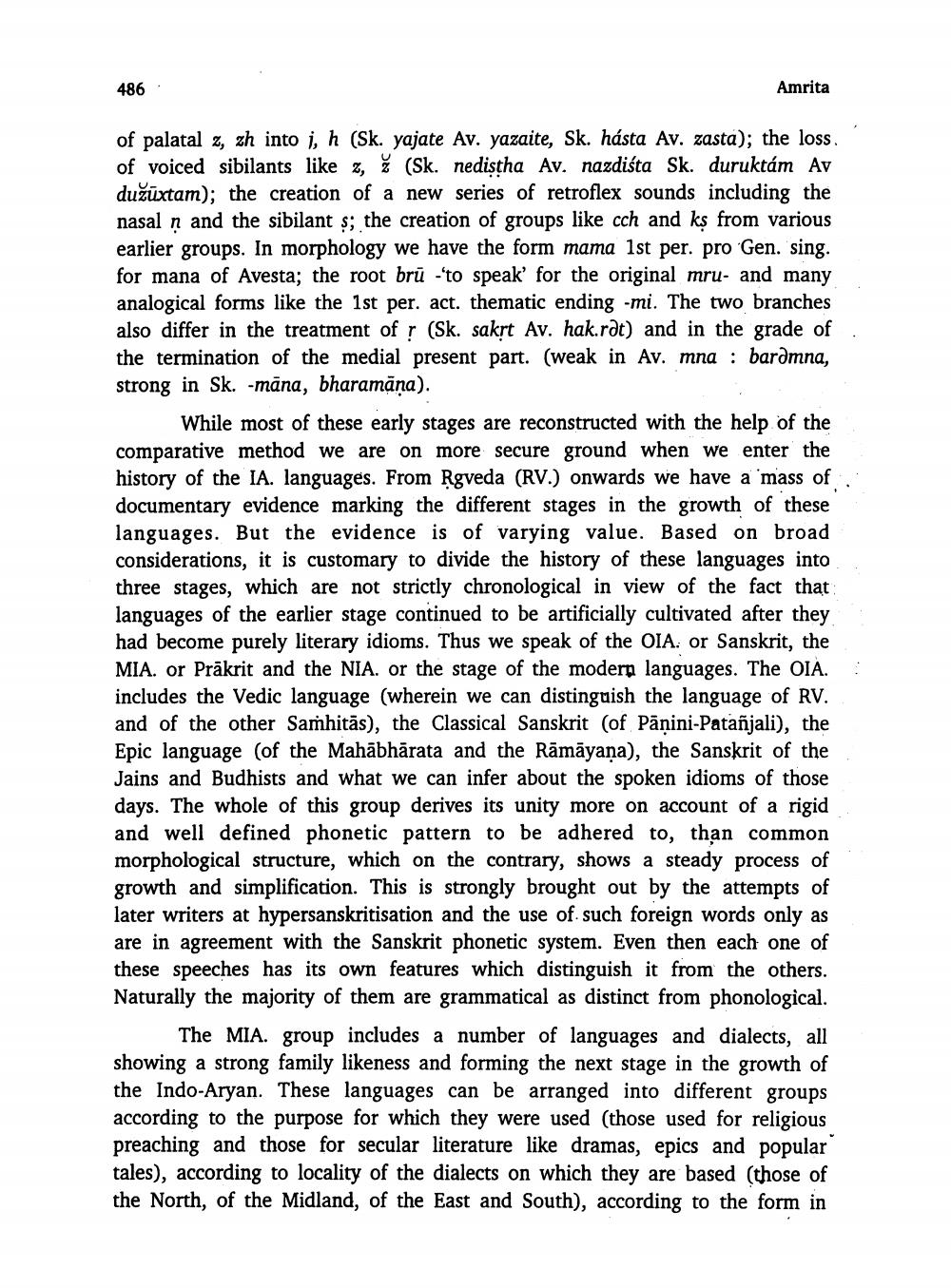________________
486
Amrita
of palatal 2, zh into i, h (Sk. yajate Av. yazaite, Sk. hásta Av. zasta); the loss. of voiced sibilants like 2, § (Sk. nedistha Av. nazdiśta Sk. duruktám Av duzūxtam); the creation of a new series of retroflex sounds including the nasal n and the sibilant s; the creation of groups like cch and ks from various earlier groups. In morphology we have the form mama 1st per. pro Gen. sing. for mana of Avesta; the root brū -'to speak for the original mru- and many analogical forms like the 1st per. act. thematic ending -mi. The two branches also differ in the treatment of (Sk. sakrt Av. hak.rdt) and in the grade of the termination of the medial present part. (weak in Av. mna : bardmna, strong in Sk. -māna, bharamana).
While most of these early stages are reconstructed with the help of the comparative method we are on more secure ground when we enter the history of the IA. languages. From Rgveda (RV.) onwards we have a 'mass of.. documentary evidence marking the different stages in the growth of these languages. But the evidence is of varying value. Based on broad considerations, it is customary to divide the history of these languages into three stages, which are not strictly chronological in view of the fact that languages of the earlier stage continued to be artificially cultivated after they had become purely literary idioms. Thus we speak of the OIA. or Sanskrit, the MIA. or Prākrit and the NIA. or the stage of the modern languages. The OIA. : includes the Vedic language (wherein we can distinguish the language of RV. and of the other Samhitās), the Classical Sanskrit (of Pānini-Patañjali), the Epic language (of the Mahābhārata and the Rāmāyana), the Sanskrit of the Jains and Budhists and what we can infer about the spoken idioms of those days. The whole of this group derives its unity more on account of a rigid and well defined phonetic pattern to be adhered to, than common morphological structure, which on the contrary, shows a steady process of growth and simplification. This is strongly brought out by the attempts of later writers at hypersanskritisation and the use of such foreign words only as are in agreement with the Sanskrit phonetic system. Even then each one of these speeches has its own features which distinguish it from the others. Naturally the majority of them are grammatical as distinct from phonological.
The MIA. group includes a number of languages and dialects, all showing a strong family likeness and forming the next stage in the growth of the Indo-Aryan. These languages can be arranged into different groups according to the purpose for which they were used (those used for religious preaching and those for secular literature like dramas, epics and popular tales), according to locality of the dialects on which they are based (those of the North, of the Midland, of the East and South), according to the form in




